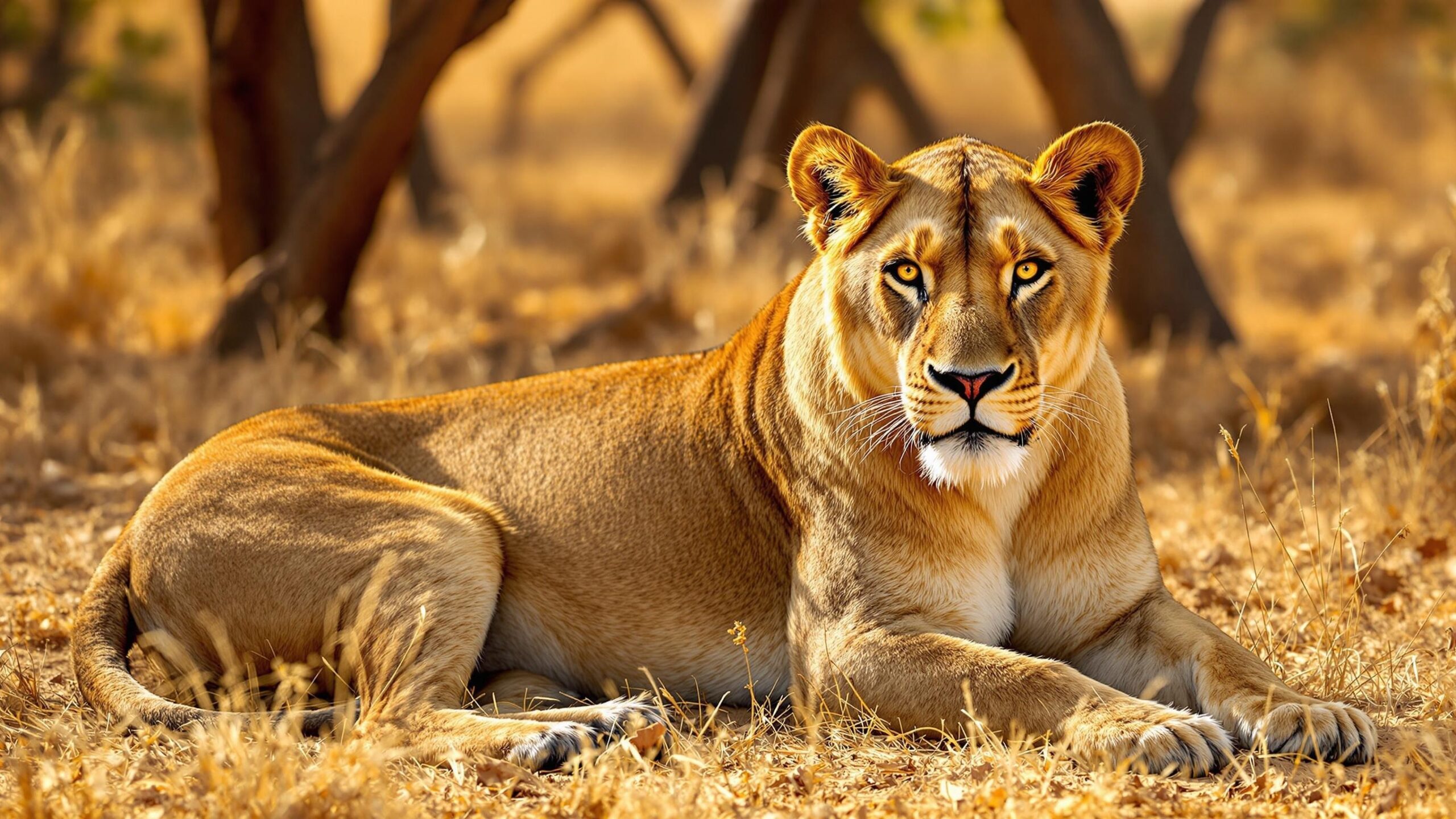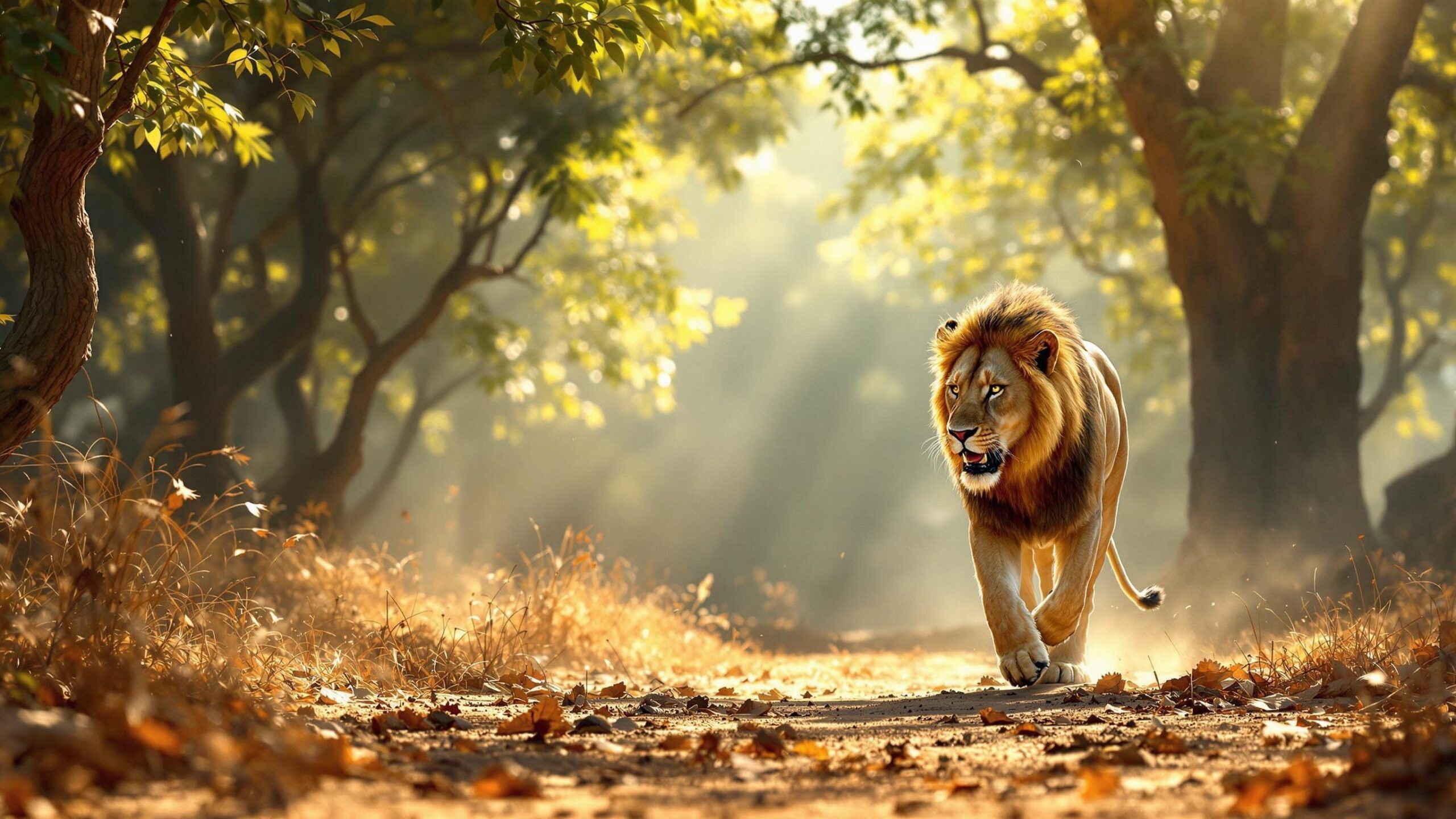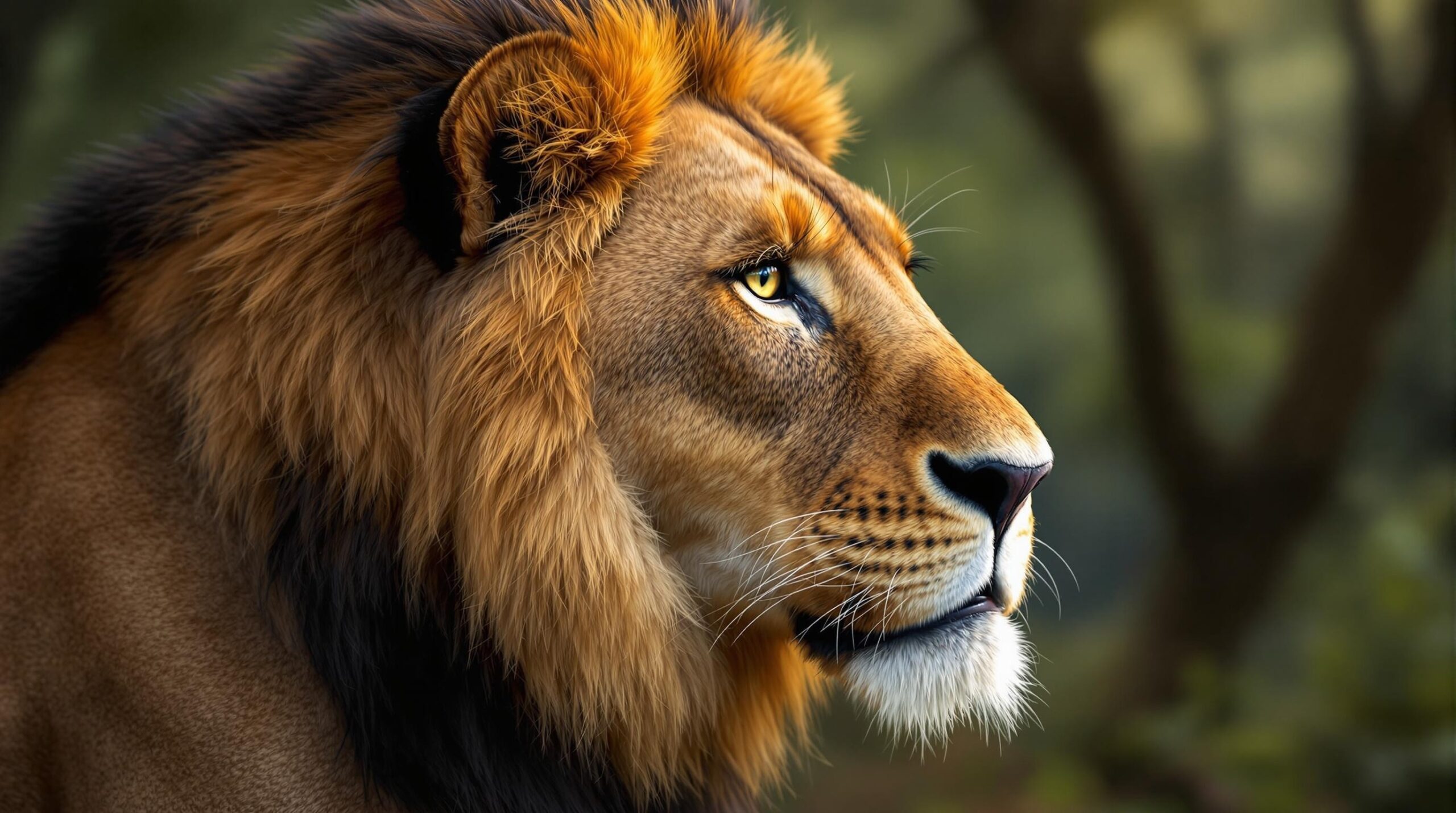The Majestic Survivor of India’s Forests: The Asiatic Lion
The Asiatic Lion, scientifically known as Panthera leo persica, is more than just a subspecies of the African lion—it’s a living legend. Residing exclusively in a small corner of India, this powerful predator once roamed from the Middle East to northern India. Today, it carries both the dignity of its royal past and the story of survival against all odds. Unlike its African cousins, the Asiatic lion has adapted to a unique environment, possesses distinct physical features, and plays a special cultural and ecological role in the region it calls home. This is the story of a lion with an ancient lineage, royal symbolism, and a tenacious grip on survival.
A Regal Heritage Carved in Stone and Scroll
Long before modern conservationists began tracking lions with GPS collars and motion sensors, Asiatic lions roamed historic empires and appeared in myths, royal insignias, and epic poetry. From the Babylonian bas-reliefs to the Indian Mauryan dynasty, these lions were revered symbols of power and divine protection. The great lion capital of Ashoka—now the national emblem of India—features four lions seated back to back, said to be inspired by this very subspecies.
Once found from Turkey through Iran and across northern India, the Asiatic lion’s range began to shrink dramatically in the 19th and early 20th centuries due to hunting, habitat loss, and competition with growing human settlements. It was the Nawab of Junagadh, a ruler in colonial India, who first took steps to protect the lions in the early 1900s after realizing their population had dwindled to fewer than 20 individuals. His actions set in motion the foundation for conservation efforts that continue to this day.
Where the Asiatic Lion Roams: A Single Wild Habitat
Unlike its African relatives that span across vast savannahs, the Asiatic lion exists in one sole wild refuge—the Gir Forest National Park and Wildlife Sanctuary, located in the state of Gujarat, western India. This dry deciduous forest and scrubland is dotted with teak trees, acacia bushes, and riverine patches, offering the lions shelter and prey. The entire global population of wild Asiatic lions—now numbering around 600 to 700 individuals—exists within and around this forested landscape. Remarkably, some have even begun to expand into surrounding villages and agricultural areas, where they live semi-peacefully with the local human population, an unusual behavior compared to most big cats.
This restricted distribution makes the species both a conservation success story and a case study in vulnerability. One disease outbreak, fire, or natural disaster in this single location could put the species at serious risk. Still, the lions of Gir have shown extraordinary resilience, and the surrounding communities, government agencies, and scientists continue to work together to protect them.

What Makes the Asiatic Lion Unique?
While it may appear similar to the African lion at first glance, the Asiatic lion has several key physical and behavioral differences that distinguish it as a unique subspecies. First, its mane is shorter and less full, especially around the cheeks and under the jaw, giving its face a more elongated and sharply contoured appearance. This allows for easier identification in the wild. Another notable feature is a distinctive fold of skin along its belly, which is rarely seen in African lions. Males typically weigh between 350 to 420 pounds, while females average 240 to 300 pounds—making them generally smaller and leaner than their African counterparts. Their roars are also subtler, not quite reaching the same thunderous volume as those from the African savannahs, but still deeply resonant across the Gir landscape.
In terms of social structure, Asiatic lions form smaller prides, usually consisting of two to three females and one or two males. This is in contrast to the large, extended prides found in Africa. These leaner pride sizes are likely a result of the more limited food supply in Gir, where prey is less abundant and more widely dispersed.
Life in the Wild: Behavior, Diet, and Roles
Despite their reduced population and habitat range, Asiatic lions exhibit the full range of big cat behaviors—from territorial roaring to cooperative hunting and cub-rearing. Males tend to patrol overlapping territories, often rubbing their faces on branches and trees to mark with scent. While they may appear solitary at times, males do join females during mating and when defending their pride or cubs from rival lions or scavengers. Their diet consists of deer, antelope, wild boar, and occasionally livestock from surrounding villages. The most common wild prey includes chital (spotted deer), sambar, and nilgai. In recent years, as lions have ventured outside the forest, incidents of livestock predation have increased—but thanks to local compensation programs and a sense of pride in the lions, retaliation killings remain rare.
Females typically give birth to 1 to 4 cubs, with a gestation period of about 110 days. Cubs stay with their mothers for up to two years, learning hunting techniques and social behavior before setting off to establish their own ranges. Cubs face many dangers, including competition, starvation, and attacks from rival males, but in Gir, survival rates have been steadily improving due to abundant food and protection.
From Near-Extinction to Hopeful Recovery
The Asiatic lion’s journey from near-extinction to hopeful recovery is nothing short of remarkable. In the early 1900s, fewer than 20 lions remained in the wild. Today, thanks to strong government protections, anti-poaching enforcement, and community cooperation, the population has grown to over 600 individuals in the wild. This makes it one of the most successful big cat recoveries in the world. The Gir Forest and its surrounding buffer zones are carefully managed with checkpoints, camera traps, and forest patrols. Livestock grazing is regulated, and waterholes are maintained during dry seasons. Veterinary care, collaring projects, and conflict mitigation efforts ensure the lions stay healthy and safe.
But challenges remain. Since the lions are confined to a single geographic region, they face risks from disease outbreaks, forest fires, and genetic bottlenecks. Plans have long been in the works to translocate some lions to a second site in India, creating a backup population to ensure long-term survival. While legal and political debates have delayed this process, conservationists continue to push for broader safety nets.

Lions and the Local People: A Unique Coexistence
One of the most fascinating aspects of the Asiatic lion’s story is its peaceful coexistence with humans. Villagers and herders living near Gir often encounter lions near water troughs, on footpaths, or even lounging in the shade of roadside trees. Unlike the dangerous tensions found in many human-wildlife conflict zones, the people of Gujarat have largely embraced the lions as neighbors and symbols of pride. This mutual tolerance is supported by compensation schemes for livestock loss, eco-tourism benefits, and cultural reverence. Many communities see the lion not as a threat, but as a part of their identity. Stories of lions being respectfully herded away with sticks or gentle shouting are common, and the lions themselves have grown somewhat accustomed to human presence—though they remain very much wild. This balance is delicate but inspiring. It’s a rare example of successful human-wildlife harmony, and conservationists often point to Gir as a global case study in coexistence.
The Lion’s Symbolic Power in Indian Culture
Beyond ecology and conservation, the Asiatic lion holds a profound place in Indian mythology, history, and symbolism. Lions appear in ancient Indian texts as avatars of strength, righteousness, and cosmic power. The Hindu deity Narasimha, a lion-headed incarnation of Vishnu, is worshipped as a protector of the faithful and destroyer of evil. The Lion Capital of Ashoka, carved in the 3rd century BCE, depicts four Asiatic lions standing back-to-back. It was adopted as the national emblem of India after independence in 1947 and appears on currency, government seals, and passports. The lion thus represents sovereignty, courage, and justice—a living legacy that blends past with present. In the modern age, the lion continues to inspire, serving as a mascot for sports teams, a symbol for environmental initiatives, and a recurring motif in art and media. Its presence, both physical and symbolic, reinforces its status as a national treasure.
Ecotourism and the Global Spotlight
With conservation success comes attention. Gir Forest has become a popular ecotourism destination, attracting both domestic and international visitors eager to see the lions in their natural habitat. Safari rides, guided walks, and wildlife photography tours generate income for the region and promote awareness of the species’ importance. Tourism, however, must be carefully managed to avoid disturbing the lions or degrading their environment. Authorities have implemented seasonal restrictions, limited vehicle entry, and eco-friendly lodging to ensure that the balance between exposure and protection is maintained.
The Asiatic lion has also gained visibility through international documentaries, conservation awards, and scientific publications, further amplifying its profile and attracting funding and partnerships for its long-term protection.
The Future of the Asiatic Lion: A Delicate Balance
As we look to the future, the story of the Asiatic lion is both inspiring and cautionary. It showcases how dedicated conservation, local partnerships, and cultural values can bring a species back from the brink. Yet it also reminds us how fragile that success can be without continued vigilance, genetic diversity, and geographic security. Efforts to establish a second wild population outside Gir remain crucial. Genetic studies suggest that inbreeding could threaten long-term health if all lions remain in one location. Expanding protected areas, fostering regional corridors, and maintaining human-lion coexistence will be key to ensuring their survival over the next century. In the end, the Asiatic lion represents more than just an animal. It is a story of identity, resilience, and harmony. It is a royal guardian of India’s wild heart—majestic, enduring, and worth every effort to protect.

